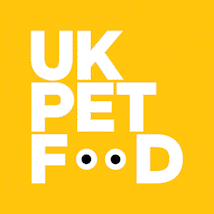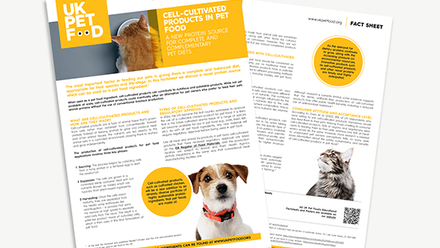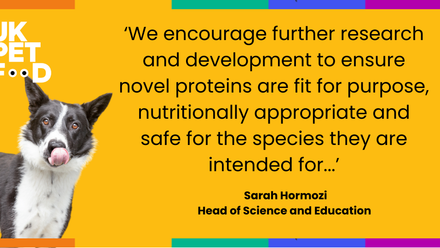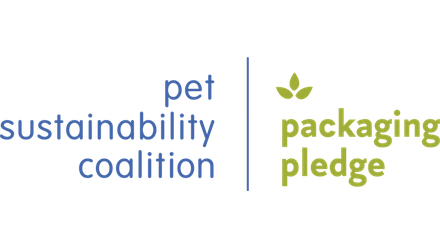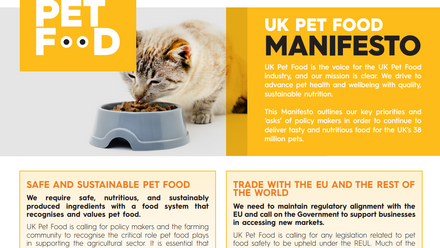Anthesis on 'Why waste management matters for pet food manufacturers'
“There is no such thing as ‘away’. When we throw anything away, it must go somewhere.”
Our planet supports many living things. Industrialisation, and the corresponding climate emergency, have pushed responsible, sustainable production of goods onto the agenda of many businesses. There are many facets to sustainability including ethical sourcing and responsible manufacturing. One, waste, if managed successfully, can improve the bottom line.
Inbound costs are increasing for ingredients, energy and distribution. To minimise waste, pet food manufacturers must adopt the three fundamental R’s of waste management, Reduce, Reuse and Recycle. While outbound prices will have to rise, the pressure on margins can be reduced if the amount of waste “produced” as part of the normal production process is identified and then reduced.
Waste management is important because:
- Reducing waste increases efficiency within the manufacturing process and, therefore, profit. With disrupted supply chains, some ingredients may become difficult to procure at the price point and availability we are currently used to.
- Consumer attitudes are driving change. A Deloitte report found that nearly 1 in 3 consumers claimed to have stopped purchasing certain brands or products due to ethical or sustainability-related concerns about them.
- Legislation around sustainability and waste management is increasing. For example, the plastic packaging tax comes into force in April 2022.
Where is the waste in pet food manufacturing?
Production
Waste decreases efficiency across the production process. It starts at the warehouse goods inwards door. Did the supplier send too much, too little, or of varying quality? Each contributes to waste in the production cycle. With the cost of kibble and protein increasing rapidly, this can make a huge difference
When you digitise production and start measuring every data point in production, insights are surfaced that can help improve efficiency. Technology can help compare suppliers. Did they honour the specified volume and quality? One might be slightly more expensive but its accuracy and quality may reduce wastage making it more cost-effective.
Real-time data and analytics help procurement teams to make better decisions. For example, a process may show you using more ingredients than the recipe requires. It can highlight the reasons why certain ingredients run out earlier than expected. Comparing actual with expected yields combined with the ingredients used, can help highlight other inefficiencies. This valuable data ensures that a finished product is consistently made in the right way, minimising waste at the start and during the process. A production planning tool that understands and manages production efficiently is therefore crucial.
Two key questions to ask:
- Does your production system measure ingredients used and by-products?
- Does it calculate all wastage from the process, and is that reportable?
Energy
Energy is a significant contributor to inbound costs, yet energy waste is often overlooked. Understanding the power consumption of machinery during and between production can identify wastage and, therefore, potential savings.
The cold chain, especially refrigerated storage, also takes energy. Does the warehouse management solution understand how goods are stored, for how long, at what temperature, and the energy used to achieve that? Is storage temperature optimised?
Distribution is yet another area where energy is often wasted. Are the routes taken by supplier deliveries, vehicles within the factory and distribution network optimised? Oil and fuel are increasingly expensive. Maximising loads and optimising routes will deliver savings in energy costs and the wear and tear of vehicles. Technology for route planning exists and can deliver efficiencies in energy and time.
Two key questions to ask:
- How much energy does your production process use?
- Can you track energy usage at each stage of the process?
Packaging
UK Pet Food cites packaging and recyclability as a priority area to focus on for sustainable production. Manufacturers should measure the usage of packaging in the lifecycle of their products. Whilst the biggest impact they can make is on the finished product, that is not the only location.
Manufacturers should engage with suppliers and consider how ingredients are packed. They should measure the condition of ingredients on arrival and as they pass through the warehouse. Quality checks on ingredients can identify where packaging protects those ingredients for later use. Understanding how goods were packaged before usage can improve quality after feedback to suppliers regarding improvements.
Does the goods-in technology break a delivery down into packaging and ingredients? Does it record the by-product from production? Recording waste, by-products, and packaging tells manufacturers how much waste their supply chain imposes upon them.
Tracking should also extend to the finished product. Is the manufacturer using plastic, pouches or tins? How are these recycled? Are there any waste products from receiving the packaging itself? Measuring this is one step to understanding the extent of the challenge.
Another is understanding what happens when the consumer uses the products. Is all the packaging necessary? Does their pet eat all the food in each package, or is there wastage? Manufacturers need to ensure that they have channels to communicate bi-directionally with the customer. They need to understand their usage, concerns and requirements.
Three key questions to ask:
- Can you measure all the packaging the company uses?
- Do you have the right technology to accurately capture, analyse and report on the data?
- Can you communicate with customers across their preferred channels?
Conclusion
The benefits of waste management cannot be realised without the ability to record and analyse data throughout the supply chain and production process. A modern ERP solution such as Anthesis for Pet Food will collect relevant information throughout across a product’s lifecycle, in the supply chain, in the warehouse, through production, with the distributor, retailer and all the way to the customer. Contact us today to find out more.
